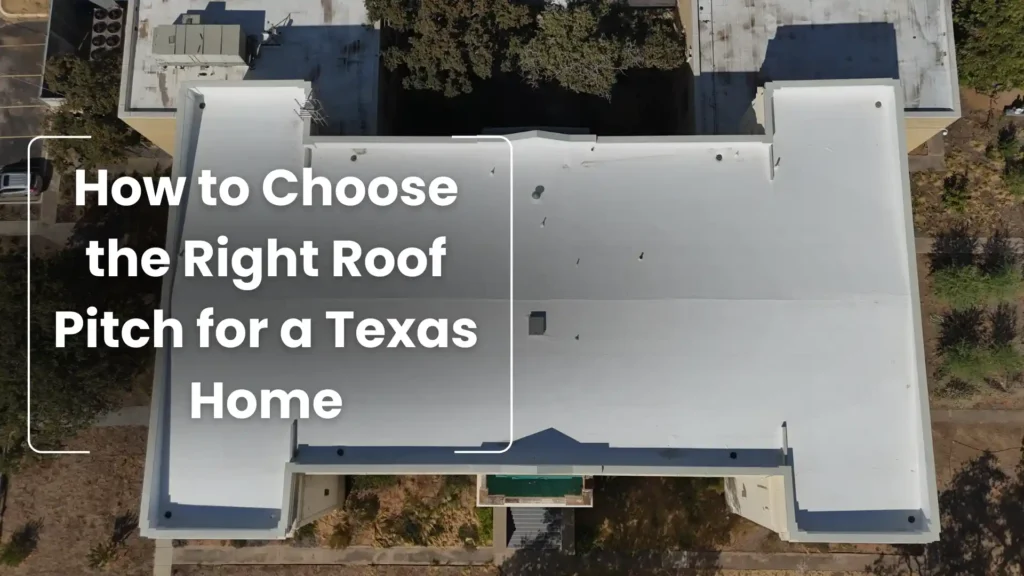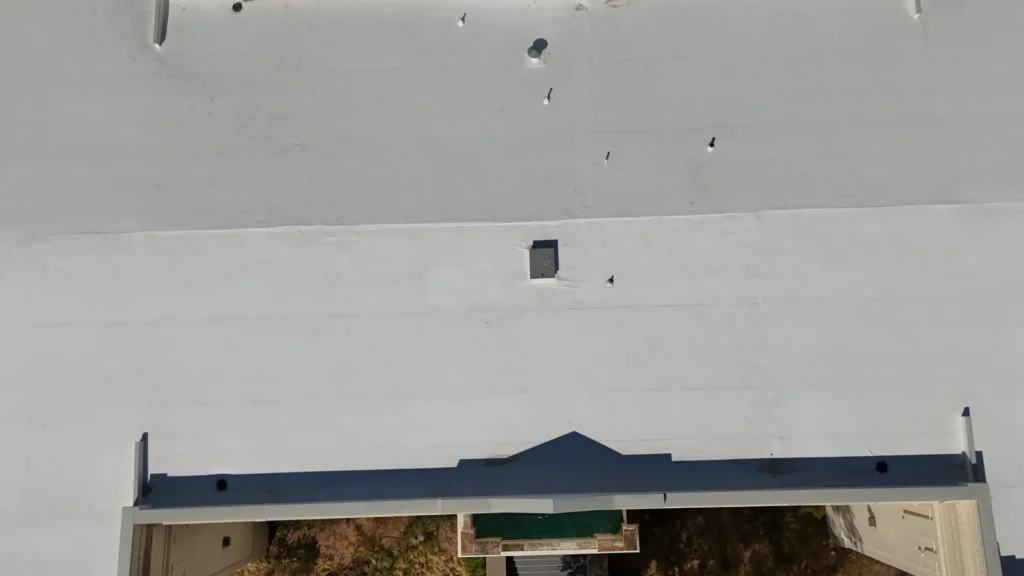How to Choose the Right Roof Pitch for a Texas Home


When replacing a roof, there are many things to consider, from the materials you choose to the aesthetic style of the new roof. One thing most Texas homeowners don’t think about is roof pitch.
What is roof pitch, why is it important, and how do you choose the right option for your Texas home? Learning more about roof pitch can help you protect your investment since pitch affects the function and performance of your roof.
What Is Roof Pitch?
Roof pitch refers to a roof’s steepness or slope. It describes how much the roof rises vertically for every 12 inches it runs horizontally. For example, a roof with a 6:12 pitch rises 6 inches for every 12 inches horizontal distance. In most situations, roof pitch is expressed as a ratio (such as 4:12 or 12:12). Roofers can also express pitch in degrees, where a 45-degree angle is a 12/12 pitch.
Understanding roof pitch is essential for several reasons. Pitch affects how water, snow, and debris drain off your roof. It can also give a home a unique, aesthetic look or style.
Roof pitch can also impact construction costs, attic space, and even how solar panels or ventilation systems are installed. Depending on the slope of the roof, specific materials are required. Low-pitch or flat roofs often require special waterproofing, while steep roofs may use shingles or tiles to shed water efficiently.
Factors to Consider When Choosing Roof Pitch
Pitch is often one of the last things a homeowner considers. Picking the right roof pitch for your home or building can be challenging. There are numerous key points a Texas homeowner should consider to achieve the best results. If you want to choose the right roof pitch for your home, here are a few factors to think about.
Climate and Weather
Steeper pitches are ideal for Texas homes in areas with heavy rain, storms, or snow. The exaggerated slope means these roofs shed water and snow more efficiently. Flatter roofs may be suitable in dry, arid climates so water doesn’t pool or collect on the surface.
Architectural Style and Look
The pitch should complement the building’s design. A higher pitch gives a home a traditional look. Low-pitch roofs are associated with a sleeker and more modern vibe.
Interior Spaces
Beyond the home’s look, pitch can also affect interior space and design. A higher pitch allows vaulted ceilings, attic storage, or additional living space.
Roofing Material
Many roofing materials are designed for specific pitches. Asphalt shingles require a steeper slope, while membrane roofing suits flat or low-slope roofs.
Longevity and Maintenance
Different roofing materials have different lifespans. Some asphalt shingles can last 20 to 30 years. Pitch affects what type of materials you can use and impacts longevity and maintenance requirements.
Building Codes and Local Regulations
Local building codes may require a minimum or maximum pitch, especially in regions prone to significant storms.
Cost and Installation
Steeper roofs are often more expensive to build and maintain due to increased materials and labor complexity. However, low-pitched or flat roofs may require more maintenance to help prevent pooling and leaks.
Roof Pitch and Roofing Material Compatibility

One of the most crucial points Texas homeowners need to consider involves roof pitch and material compatibility. Not all roofing materials are compatible with a steep roof. Alternatively, low-slope and flat roofing require additional waterproofing materials that a steeper roof may not need. Pitch and materials go hand in hand and can affect your roof’s aesthetics, functionality, and longevity.
Choosing the right roofing material depends heavily on your roof’s pitch. This roof pitch and material compatibility guide can help you understand which materials may work with your home project.
Flat and Low-Slope Roofs (3:12 and below)
These roofs require watertight materials to help prevent leaks. Without specialized roofing materials, water can pool on low-slope and flat roofs. Over time, this can lead to water damage, leaks, mold, and structural damage. Some of the best materials for these types of roofs include:
- EPDM – A rubber membrane that is easy to install and known for its low cost and overall longevity.
- TPO – Thermoplastic polyolefin membrane that is excellent for dryer climates because it can absorb UV rays. It is also flame-resistant.
- PVC – Polyvinyl chloride membranes are similar to TPO membranes but tend to have a longer lifespan and offer fantastic energy efficiency.
- Built-up roofing (BUR) – Traditional BUR materials contain multiple layers of roofing fabric and bitumen asphalt or coal tar. Adding reflective coatings or gravel provides weather and UV protection for flat roofs.
- Modified bitumen – Modified bitumen materials are made with polymer-reinforced cap sheets, which are more flexible than traditional BUR materials.
Moderate-Slope Roofs (4:12 to 6:12)
Most residential roof pitches are moderate slopes and offer the widest material options. Materials for these types of roofing projects can include:
- Asphalt shingles – One of the most popular and traditional home roofing materials. They come in numerous types, such as three-tab, architectural, and luxury or designer shingles.
- Wood shakes – Wood shingles add a unique dimension and aesthetic to a home, but they can require more maintenance.
- Metal roofing – Metal shingles are not only gorgeous, but highly durable.
- Clay or concrete tiles – Clay shingles offer a southwestern flair to a home, while concrete adds a modern touch.
Steep-Slope Roofs (7:12 and above)
Steep slopes aid drainage, boost curb appeal, and add architectural drama and interest to a home. Materials suited to steeper slopes are:
- Metal roofing (especially standing seam)
- Slate tiles
- Clay tiles
- Wood shakes or shingles
A RoofingOnly.com Professional Can Help You Choose
You don’t have to become a roofing pitch expert overnight. The experienced Texas roofing professionals at RoofsOnly.com can evaluate your home and roof. Then we can offer specific and tailored roofing suggestions that address pitch and your aesthetic and functional goals. From load-bearing to steep roofs, we understand how to calculate roof pitch and find the best materials for the job.
Contact our team today to schedule a free roof inspection, and let’s get started.
